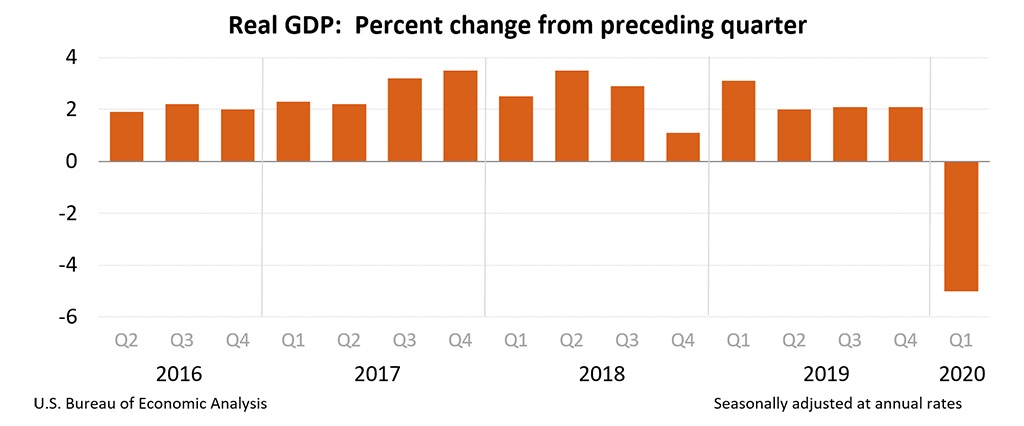Real gross domestic productincreased at an annual rate of 3.2% in the first quarter of 2019, according to the "advance" estimate released by the Bureau of Economic Analysis. In the fourth quarter of 2018, real GDP increased 2.2%.
The "second" estimate for the first quarter will be released on May 30.
The increase in real GDP in the first quarter reflected positive contributions from personal consumption expenditures, private inventory investment, exports, state and local government spending, and nonresidential fixed investment. Imports, which are a subtraction in the calculation of GDP, decreased. These contributions were partly offset by a decrease in residential investment.
The acceleration in real GDP growth in the first quarter reflected an upturn in state and local government spending, accelerations in private inventory investment and in exports, and a smaller decrease in residential investment. These movements were partly offset by decelerations in PCE and nonresidential fixed investment, and a downturn in federal government spending. Imports, which are a subtraction in the calculation of GDP, turned down.
Current dollar GDP increased 3.8%, or $197.6 billion, in the first quarter to a level of $21.1 trillion. In the fourth quarter, current-dollar GDP increased 4.1%, or $206.9 billion.
The price index for gross domestic purchases increased 0.8% in the first quarter, compared with an increase of 1.7% in the fourth quarter. The PCE price index increased 0.6%, compared with an increase of 1.5%. Excluding food and energy prices, the PCE price index increased 1.3%, compared with an increase of 1.8%.
Related Posts
-
Real gross domestic product (GDP) decreased at an annual rate of 5 percent in the first…
-
In the fourth quarter of 2019, real GDP increased 2.1%.
-
The GDP estimate is based on more complete source data than were available for the…



